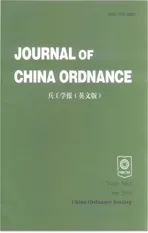Experimental Investigation on Finishing Technology by Magnetostrictive Ultrasonic Vibration of Magnetic Liquid
2010-03-09CHENShanfei陈善飞GUBangming顾邦明WANGZhengcai王正才WANGZhengliang王正良
CHEN Shan-fei(陈善飞),GU Bang-ming(顾邦明),WANG Zheng-cai(王正才),WANG Zheng-liang(王正良)
(1.Zhejiang Wanli University,Ningbo 315100,China;2.Ningbo Polytechnic,Ningbo 315100,China)
Introduction
The surface quality of a component influences its performance,life and reliability greatly.With the rapid development of modern high-speed and high-precision equipment,the needs for the components with higher surface quality are even more critical[1-2].Various complex precision components made of new materials are springing up.Their structures and shapes are more and more complex,precision demands are higher and higher,surface integrity is more and more strict. Thus, the higherfinishing techniquesare needed urgently.Therefore,it is very important to explore the new technologies which can make finishing on the components with complex surface,mold cavities and inner wall of tiny tubes[3-4].
In recent years,many researchers pay attention to the patented magnetic abrasive finishing technology proposed by Soviet Union engineer early in 1960s.Since then,many types of magnetic abrasive finishing machines have been developed and used in actual productions.Japan has conducted massive researches since the beginning of 1980's,developed various magnetic abrasive finishing equipment suitable for different shapes and materials.In our country,such researches were started from the 1990s and the difficult problems on the manufacture of the magnetic abrasive particles were solved.But,the fatal shortcoming of this technology is its low productivity.The ultrasonic polishing utilizes the ultrasonic vibration of the tool's end to grind the workpiece and can polish the hard crisp materials.Its merits are high productivity,simple equipment requirements,easy operation and maintenance,but it encounters great difficulties in finishing of the more complex mechanical parts and the cavity surface[5].
In order to eliminate the traditional limitations in the application of the finishing technologies,the researchers have begun to investigate non-traditional or complex finishing methods[6].This paper tries to integrate the magnetic abrasive finishing and ultrasonic polishing into a new compound finishing technology,which may provide a new way to finish the complex,cavity and inner surfaces.
1 Test Scheme
The magnetic liquid is a kind of stable colloid formed by 10 nm diameter solid magnetic particles coated with a layer of surfactant molecules and then evenly dispersed in water,oil,grease or other carrier liquids.It is a special functional liquid and has both strong magnetism like ferromagnet and the fluidity of common liquid[7].
In cutting process using magnetostrictive ultrasonic vibration,the power ultrasonic transducer is made of ferromagnetic solid materials.However,the liquid has greater compressibility than solid,thus the magnetic liquids with strong magnetization should have stronger magneto constriction theoretically.In our experiment,an alternative gradient magnetic field is established to act on the magnetic liquid.As an actuator,it can generate the ultrasonic vibration which can be detected by a piezoelectric ceramic sensor.Thus,we can experimentally verify whether the magnetostrictive effect of magnetic liquid exists.
2 Experimental Apparatus
Figure 1 shows the photograph of the experimental apparatus.Fig.2 is its sketch.It consists of four parts as follows:1)magnetic liquid mixed with non-magnetic abrasive and anti-rust agent placed in a straight measuring cylinder;2)cone-like coil to generate an alternative gradient magnetic field;3)generator and amplifier to provide square-wave voltage;4)piezoelectric ceramic sensor and DF4321 dual-trace oscilloscope.
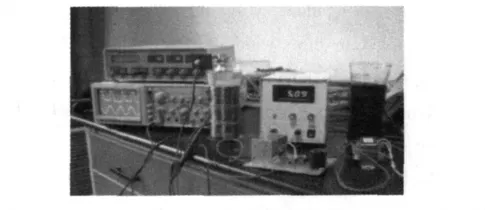
Fig.1 Experimental apparatus
The magnetic liquid used in the test is prepared by using 10 nm Fe3O4particulates scattering in poly-αolefin fluid and matched surface activator.While,120-hole meshed SiC can be chosen as non-magnetic abrasive.
The circuit to generate the alternating gradient magnetic field is shown in Fig.3.The generator and power amplifier apply a square-wave voltage with adjustable frequency to the cone-like coil,it results in a saw-tooth current in the coil.In order to have variable
,the amplifier is powered by an independent and adjustable power,which consists of a transformer,a bridge rectifier and a filter circuit.
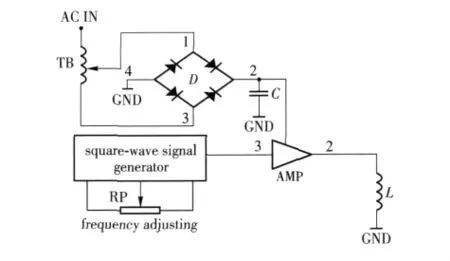
Fig.3 Circuit generating alternating gradient magnetic field
Figure 2 shows the structure of the cone-like coil around the 0.250 m3straight measuring cylinder.It has 2 000 turns and an inductance of 4 mH.In order to weaken the skin effect,0.47 mm diameter lacquered wire is coiled in three-winding style.The gradient of the magnetic field along the solenoid axis depends on the cavity size of the coil,the change of the coil radius,the coil turns and the solenoid current.
In the test,the magnetic liquid mixed with nonmagnetic abrasive and anti-rust agent is injected into the measuring cylinder.Then,a hyperbolic aluminum specimen is immersed in the liquid.The piezoelectric ceramic transducer is located above the open end of the cylinder.The gradient magnetic field acts in the magnetic liquid,leads to the alternative internal pressure in the magnetic liquid,thuscausesthe volume change.Because the magnetic liquid is put in the cylinder,its cross section is invariable,and the volume change results in the mechanical vibrations along its axis,which excites sound wave in the air.The piezoelectric sensor transforms the sound wave to the electrical signal which can be displayed by DF4321 oscilloscope.
3 Result Analyses
3.1 Magnetostrictive Effect Mechanism of Magnetic liquids
As shown in Fig.4,the square-wave voltage signal and the acoustic voltage signal detected by the sensor are displayed in channel 1 and 2 of the oscillo-
,respectively.The experiment results show that the acousticsignal's frequencychanges when the square-wave's frequency is adjusted in a wide range.The highest magnetic liquid stretching vibration frequency can be up to 100 kHz and the lowest is 1.5 kHz.Therefore,the existence of magnetostrictive effect of magnetic liquid is proved by the experiment.
1.3.5 色谱条件 色谱柱:Acquity UPLC RBEH C18(2.1 mm × 100 mm,1.7μm);流动相:乙腈-0.5%甲酸溶液(7∶93);柱温:35℃;流速:0.2 mL·min-1;进样量:2μL。
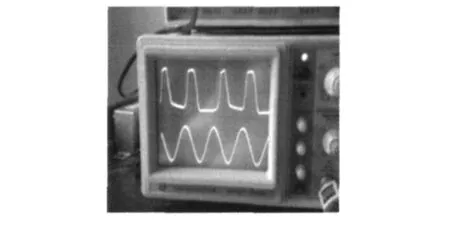
Fig.4 Displayed square-wave and acoustic signals
Setting the input current I=2 A,the frequency f=20 kHz,the height of the magnetic liquid h=100 mm,the amplitude A of the vibration is 0.12 mm.
Theoscillation equation is
x=Acos(ωt+φ)=1.2×10-4cos(4π ×104t+φ).
Then,the deformation of magnetic fluid Δh=A=0.12 mm.
So,the magnetostrictive strain is

As shown in Fig.5,take a magnetic liquid micelle,its volume is denoted as ΔV,the inner pressure as P,n the unit vector in the direction of pressure,its height to the reference point as h,the magnetic induction as B,the magnetization as M,the unit resultant force of magnetic and gravity as f.

where ρ is the magnetic liquid's density in kg/m3,g the gravity acceleration in m/s2,k the unit vector in the direction of gravity,C the integral constant determined by the boundary conditions.
The pressure equation can be written as

Formula(3)shows that themagnetic liquid's pres-sure is produced by both gradient magnetic field and gravitational field.

Fig.5 Micelle of magnetic liquid
Also,

where K is the liquid's bulk modulus.In the cylinder,the cross section of the magnetic liquids is a constant,thus,

In the experiments,the gravity is constant,it will not cause magnetic liquid's expansion.Besides,the gravity is much smaller than the magnetic field force and can be neglected.Therefore,from Eq.(3)and(5),we have


It can be clearly seen from above calculation that the magnetic liquid's magnetostrictive coefficient λ relates to the bulk modulus K,the external magnetic induction B and the magnetization M of the magnetic liquid.
The magnetic liquid's bulk modulus K reflects its compressibility;the magnetization M mainly depends on the external magnetic induction B and the contents of the magnetic particles;the induction B mainly relates to the coil inductance and current.Therefore,the high-power ultrasonic magnetostrictive vibration devices can be designed.
3.2 Analysis of Ultrasonic Vibration Finishing Processing
In order to inspect the ultrasonic finishing ability of the magnetic liquids to the complex surfaces,some tests were carried out.Each aluminum specimen with hyperboloid surface was polished under the 20 kHz ultrasonic vibration for 5 minutes.The surface roughness before and after processing are shown in Table 1.It can be seen that this technology can decrease the surface roughness,and has many other advantages,such as strong adaptability and lower requirement on accuracy of processing equipment,which provides a solution for high-quality finishing of many complex surfaces.

Table 1 Hyperboloid surface roughness before and after processing
When an external magnetic field acts on the magnetic liquid,the magnetic particles form a chain-like structure equivalent to the coagulant of common grinding wheel.It holds the nonmagnetic abrasives and forms numerous miniature flexible grinding wheels,as shown in Fig.6.Under the ultrasonic vibration caused by the high-frequency alternative gradient magnetic field,they take place relative movements with respect to the workpiece.The value and direction of grinding speed change periodically.
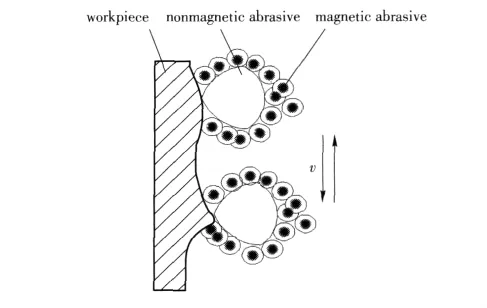
Fig.6 Sketch of magnetic liquid ultrasonic vibration finishing
If the coil current I=2 A and the frequency f=20 kHz,the vibration amplitude A=1.5 ×10-3m,and the vibration period is very short T=1/f=1/20 000 s.It results in a high instantaneous grinding velocity and acceleration within a very small displacement.
The oscillation equation is
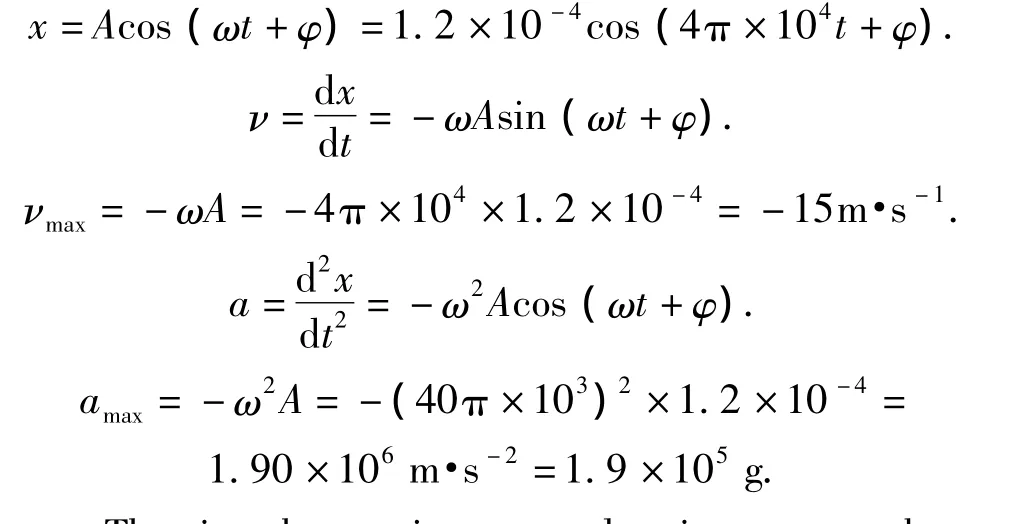
That is,the maximum acceleration can reach to 190 000 times of the gravity acceleration.It can be imagined that the physical and mechanical properties of the processed material within small local volume will change dramatically.When the abrasives collide,rub or slide on the workpiece surface many times,they make the metal surface exist more small plastic deformations or even cracks.When the plastic deformation exceeds its deformation limitation or the crack expands,the tiny chips will become abrasive dusts due to fatigue fracture,and then drop off from the workpiece surface,so as to realize the surface finishing.
4 Conclusions
Using the magnetic liquid as the actuator of the ultrasonic vibration,the nonmagnetic abrasive and anti-rust agent are mixed into the magnetic liquid.When the alternative gradient magnetic field acts on the magnetic liquid,it makes the volume of the magnetic liquids change,so that the vibration of the magnetic liquid occurs.Therefore,the nonmagnetic abrasive held by the magnetic liquid can grind the workpiece,thus,finish some complex surface,such as mold cavity and inner wall of small pipe.
The magnetic liquid finishing technology can improve the final surface quality,and also has many other advantages,such as strong adaptability and lower requirement on accuracy of processing equipment,which provides a solution for high-quality finishing of many complex surfaces.
[1]ZHAO Xue-tang,ZHANG Yong-jun.Development of die and mould finishing technology[J].China Mechanical Engineering,2002,13(22):1977-1980.(in Chinese)
[2]XING man-xi,SUN huan-wu.Research on hydrokinetics model of fluid magnetic abasives[J].Mechanical Management and Development,2008,24(2):46 -49.(in Chinese)
[3]RU Qiu-sheng,YANG Shi-chun,SUN Huan-wu,et al.Research on the mechanism of liquid-magnetic abrasive tool finishing[J].Mechanical Engineering & Automation,2006,4(2):18 -22.(in Chinese)
[4]WANG Zong-cai,HE Wen-ping .Research on the application of nano-structure magnetic liquid material in polishing[J].Manufacturing Technology & Machine Tool,2009,1(1):86-89.(in Chinese)
[5]FENG Jie,WANG Hai-tao,ZHOU Zhao-yuan.Machining of small section with magnetic liquid rubbin[J].2006,8(4):23-25.(in Chinese)
[6]LI Wei-dong,YANG Sheng-qiang,SUN Huan-wu,et al.Study on the liquid-magnetic abrasive tool finishing technology and the performance of the abrasive tool[J].Sci-Tech Information Development & Economy,2007,17(2):172-175.(in Chinese)
[7]CHAN Shan-fei,WANG Zheng-liang,YU Xiu-ping.Cleanliness measurement of ball bearings based on the rotating magnetic fluid sealing[J].Acta Metrologica Sinica,2009,30(1):80 -83.(in Chinese)
猜你喜欢
杂志排行
Defence Technology的其它文章
- Beam Pattern Synthesis Based on Hybrid Optimization Algorithm
- Robust Stability Criterion for Uncertain Neural Networks with Time Delays
- Optimization of Submarine Hydrodynamic Coefficients Based on Immune Genetic Algorithm
- A New Chaotic Genetic Hybrid Algorithm and Its Applications in Mechanical Optimization Design
- Quantitative Analysis of Components in OC-CS Sprays by High Performance Liquid Chromatography with Double Wavelength UV Detection
